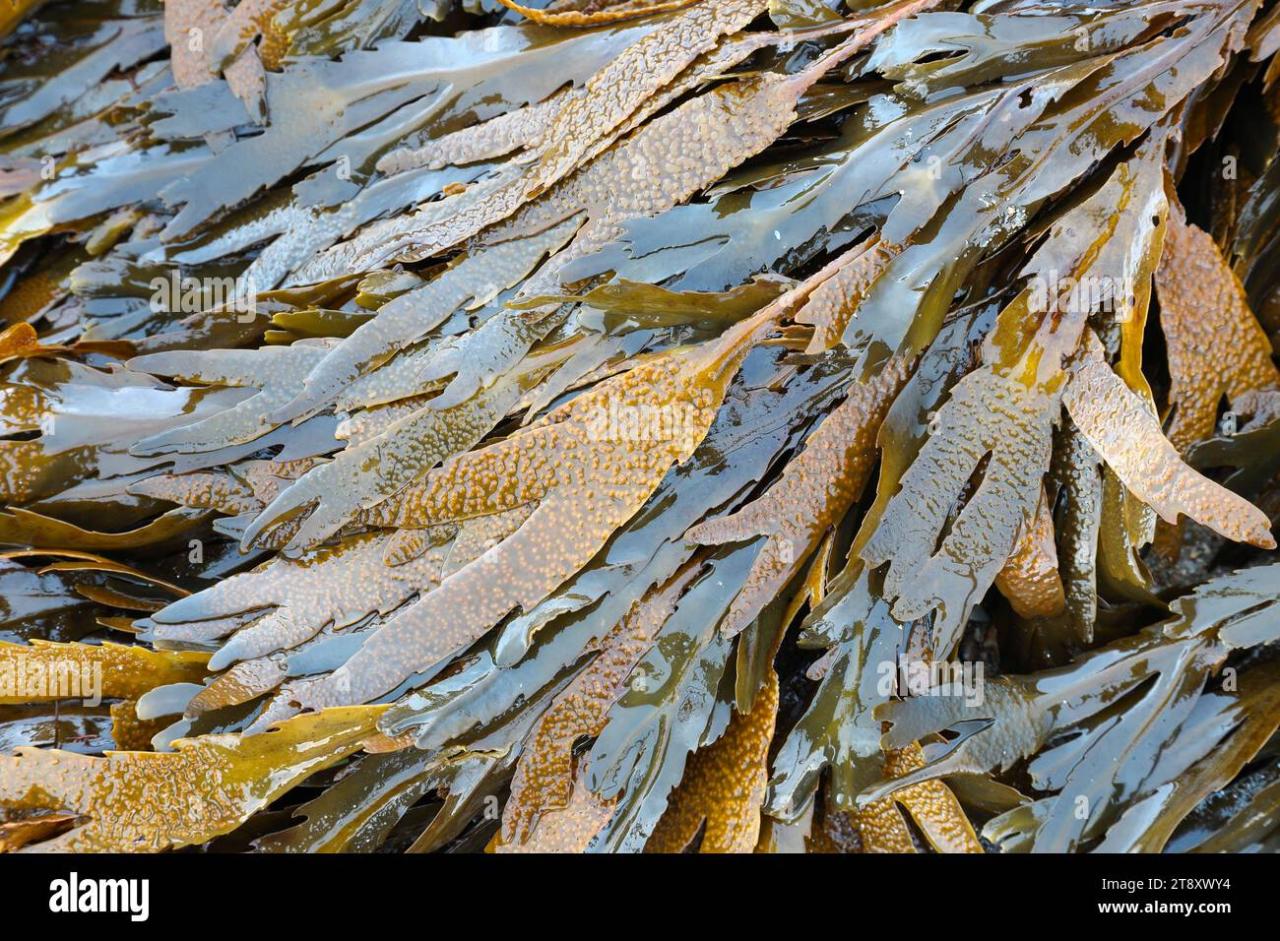Introduction to Sharpening Serrated Knives
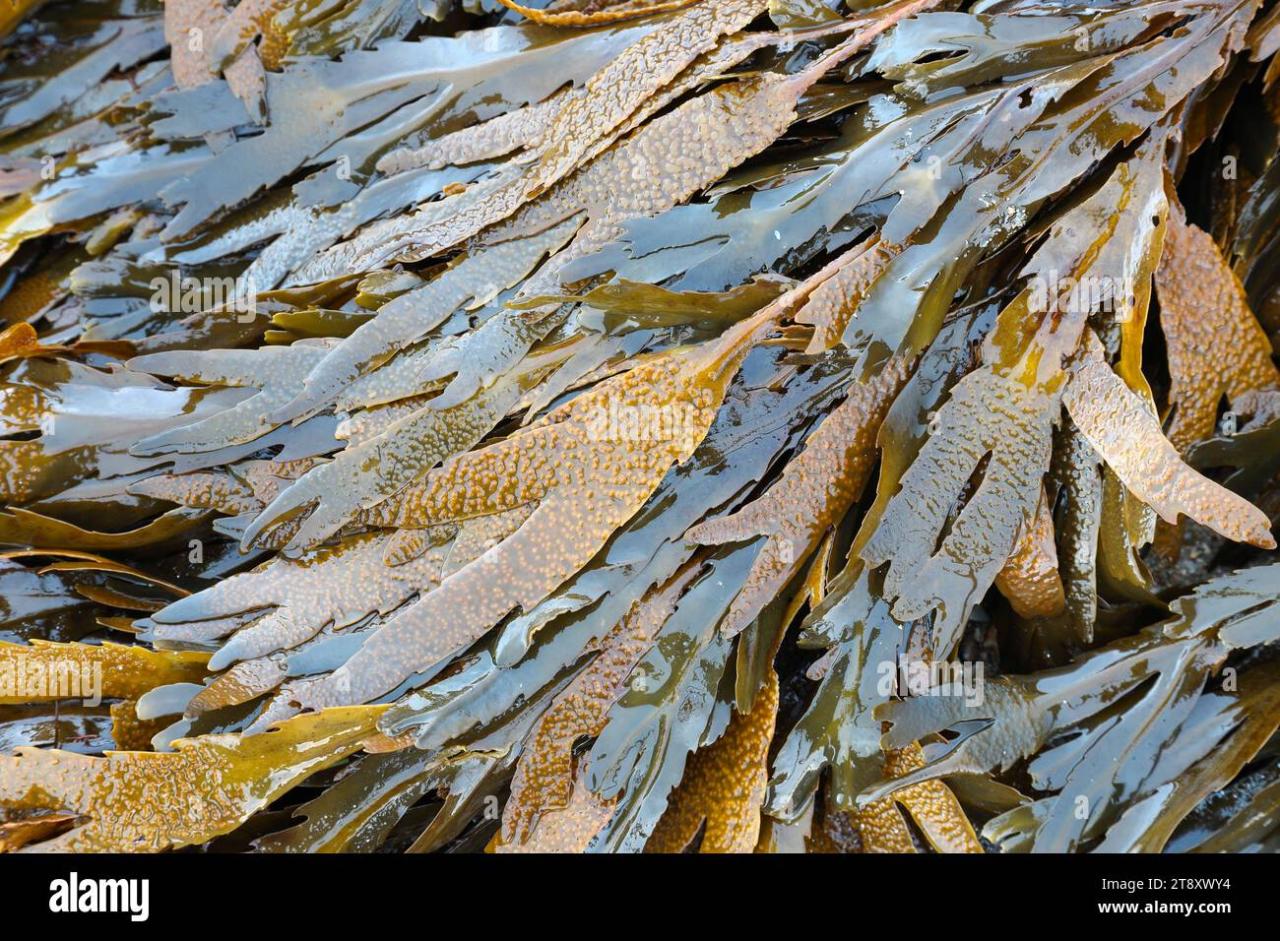
Maintaining serrated knives is crucial for optimal performance and safety in the kitchen. These knives, designed with their characteristic notched edges, are essential for tasks requiring cutting through tough materials like bread, tomatoes, or poultry. Proper sharpening ensures a clean, controlled cut, reducing the risk of slipping and improving the overall efficiency of the knife.
Sharpening serrated knives presents unique challenges compared to smooth-edged knives. The varying tooth profiles require specialized techniques and tools to maintain the integrity of the serrations. A crucial consideration is the potential for damage to the serrations if the sharpening process isn’t carefully managed. Understanding the specific type of serration on your knife is paramount to choosing the right sharpening method.
Serrated Knife Edge Types
Serrated knife edges are categorized by the tooth profile’s characteristics. Fine-tooth serrated knives are often used for delicate tasks, such as slicing vegetables, while coarse-tooth serrated knives are more suitable for tough materials like meat or bread. The tooth spacing and angle significantly influence the knife’s performance and the sharpening approach required.
Benefits of Properly Sharpened Serrated Knives
Properly sharpened serrated knives offer several advantages. They deliver a more controlled and precise cut, reducing the risk of slipping and injury. This enhanced control also contributes to more efficient food preparation, reducing the time spent on tasks and minimizing the chance of food waste. A sharp serrated knife is a safer and more effective tool in the kitchen.
Comparison of Serrated Knife Types and Sharpening Methods
| Knife Type | Tooth Profile | Optimal Sharpening Method | Notes |
|---|---|---|---|
| Fine-tooth | Closely spaced, narrow teeth | Use a fine-grit sharpening steel or a specialized serrated knife sharpener. Focus on maintaining the tooth profile and avoid excessive pressure. | Ideal for delicate foods, slicing vegetables, and precise cuts. |
| Coarse-tooth | Widely spaced, deep teeth | Employ a coarse-grit sharpening steel or a serrated knife sharpener designed for coarse teeth. Apply moderate pressure while maintaining the desired tooth angle. | Best for tougher foods, like meat, bread, and poultry. |
| Combination | Intermediate tooth spacing and profile | Utilize a combination approach, employing both fine and coarse grits depending on the specific tooth profile. Adjust pressure and sharpening angle according to the tooth structure. | Suitable for a broader range of food types. |
Proper sharpening techniques are essential to maintain the functionality and safety of your serrated knives.
Understanding Serrated Knife Geometry
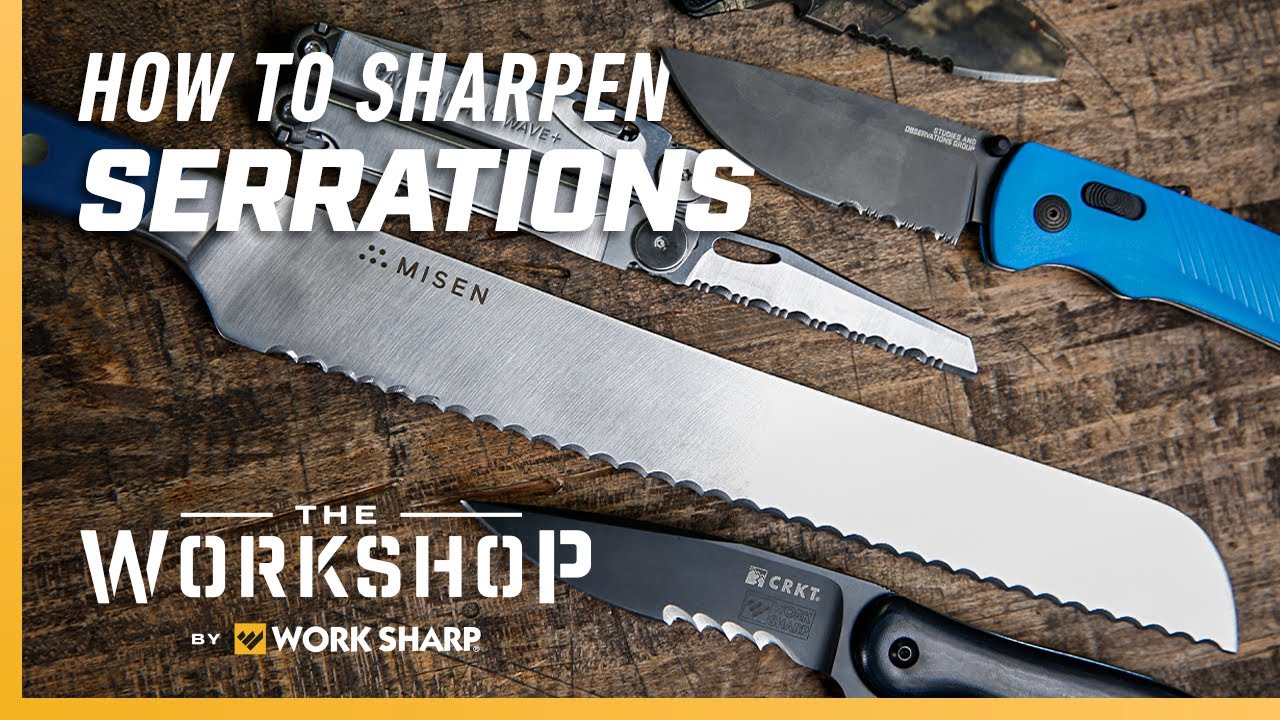
Serrated knives, with their distinctive saw-like edges, offer a unique cutting experience. This specialized design significantly impacts how these knives perform and, crucially, how they should be maintained. Understanding the nuances of serrated knife geometry is essential for achieving optimal sharpness and longevity.
The serrations, or the small, tooth-like projections on the blade, are not merely decorative. They are engineered to create a cutting action that differs substantially from a smooth blade. This difference demands a unique approach to sharpening.
Serrated Edge Features
Serrated knife edges are characterized by a series of precisely angled teeth. These teeth are typically symmetrical and are spaced at regular intervals. The angle of these teeth is critical for efficient cutting. The shape of the teeth and their spacing play a significant role in the knife’s performance.
Function of Serrations
The function of serrations is to create a sawing action when the knife is used. This action is particularly effective on tough or fibrous foods, such as bread, meat, or vegetables. The teeth grab and hold the food, while the downward force of the blade tears or cuts through the material.
Maintaining Serration Angles
Maintaining the precise angles of the serrations is paramount to a knife’s effectiveness. These angles are crucial for the serrations to grip and cut effectively. Any alteration to these angles will impair the knife’s ability to perform its intended function. Proper sharpening techniques preserve these critical angles.
Sharpening Areas
Sharpening a serrated knife focuses on two distinct areas. First, the tops of the serrations require attention to maintain their sharp, angled cutting edge. Second, the flat areas between the serrations need sharpening to maintain a consistent cutting plane. This balanced approach ensures a smooth, controlled cut.
Diagram of Serration Angles and Blade Profile, How to sharpen serrated knives
Imagine a cross-section of the blade. The serrations are depicted as triangular projections, each with a specific angle relative to the blade’s main surface. The flat areas between the serrations are shown as straight lines, and the overall profile of the blade, including the serrations, is illustrated. The diagram should visually highlight the critical angles and the specific areas that need sharpening, emphasizing the need to maintain the angles of the serrations for optimal cutting performance. A sharp blade will have a uniform and consistent serration angle across the entire blade, while a dull blade will exhibit varying angles and uneven cutting performance. This visual representation should assist in the understanding of the importance of maintaining the serration geometry.
Essential Tools and Materials for Sharpening
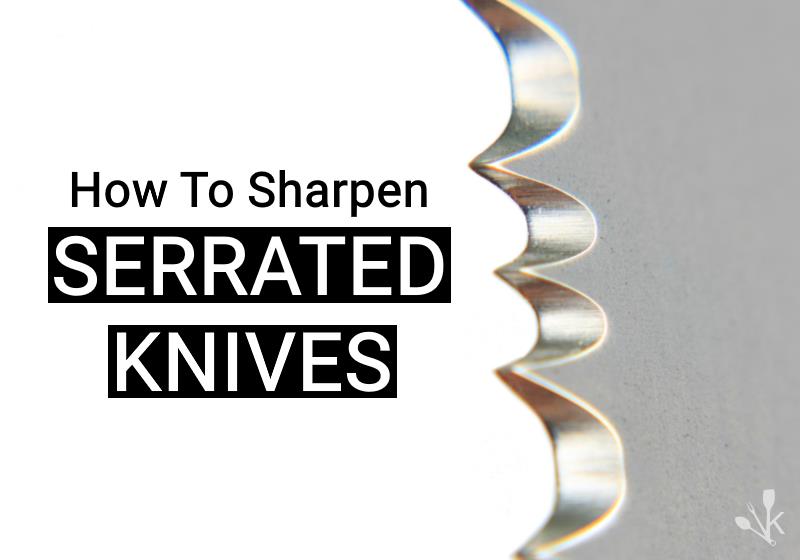
Proper sharpening is crucial for maintaining the performance and longevity of serrated knives. Selecting the right tools and materials ensures a safe and effective sharpening process, maximizing the knife’s cutting ability. A well-maintained serrated knife is a valuable asset in any kitchen.
Effective sharpening requires understanding the specific needs of serrated knives. The varied tooth geometry necessitates tools designed to address this unique structure without damaging the blade’s integrity. Careful selection and proper application of the tools are key to achieving a sharp and durable edge.
Essential Sharpening Tools
Understanding the specific requirements of serrated knives is paramount for achieving optimal sharpness and durability. Various tools cater to different needs, from basic honing to more advanced sharpening techniques. A comprehensive toolkit allows for a range of approaches, ensuring versatility and efficiency.
- Honing Steel: A honing steel, also known as a sharpening steel, is a crucial tool for maintaining an existing edge. It realigns the blade’s microscopic imperfections, restoring its sharpness without altering the blade’s shape. A honing steel is essential for quickly restoring a sharp edge after light use. For serrated knives, a honing steel with a smooth surface is ideal for the serrations to maintain the geometry. It is important to use a honing steel correctly to avoid damaging the blade or the serrations.
- Sharpening Steel (Diamond or Ceramic): Diamond or ceramic sharpening steels are more aggressive than honing steels. They can effectively sharpen a knife’s edge, even for serrated blades. Diamond sharpening steels are particularly effective at removing minor imperfections in the serrated edge. These steels often come with different grits, allowing for varying degrees of aggressiveness.
- Sharpening Stones (Coarse and Fine Grit): Sharpening stones, typically available in coarse and fine grits, are essential for more extensive sharpening. Coarse grits are used to remove significant damage to the blade’s edge, while fine grits refine the edge and enhance its sharpness. The selection of the appropriate grit depends on the extent of the blade’s dullness. Serrated knives, however, require a careful approach to avoid altering the serration’s geometry when using sharpening stones.
Tool Selection for Different Knife Types
Choosing the right tools depends on the type of serrated knife and the desired level of sharpness. Consider the knife’s overall condition and the desired outcome.
- For lightly used knives: A honing steel is sufficient to maintain the existing edge. This approach avoids unnecessary alteration of the serrated geometry. Honing steels are suitable for quickly restoring the edge and maintaining sharpness.
- For moderately dull knives: A sharpening steel, like a diamond or ceramic steel, is a better option to address the dullness without compromising the serrated edge’s geometry. It offers a more aggressive approach than honing.
- For significantly dull knives: Sharpening stones provide the most aggressive approach, enabling significant edge restoration. However, using sharpening stones on serrated knives necessitates a meticulous and precise technique to maintain the serration’s shape. It’s crucial to avoid removing too much material to prevent compromising the serrated geometry.
Sharpening Steel Comparison
This table provides a comparative overview of different sharpening steel types and their applications.
| Sharpening Steel Type | Features | Uses |
|---|---|---|
| Honing Steel | Smooth surface, minimal abrasive action | Maintaining existing edge, realigning blade |
| Diamond Sharpening Steel | Diamond particles for aggressive sharpening | Restoring sharpness, removing minor damage |
| Ceramic Sharpening Steel | Ceramic material for precise sharpening | Restoring sharpness, maintaining fine edge |
Essential Sharpening Materials
The proper use of sharpening materials ensures a safe and effective sharpening process. Lubrication and compounds help in the process.
- Sharpening Oil: Sharpening oil is essential for lubricating sharpening stones, preventing them from becoming clogged and improving the sharpening process. This is particularly important for maintaining the efficiency and effectiveness of sharpening stones, especially for serrated knives. Proper lubrication avoids unnecessary friction, ensuring optimal results.
- Honing Compound: Honing compounds are used with honing steels to improve their effectiveness and avoid damaging the blade. They provide a smoothing action, enhancing the realignment of the blade’s edge.
Sharpening Techniques for Serrated Knives: How To Sharpen Serrated Knives
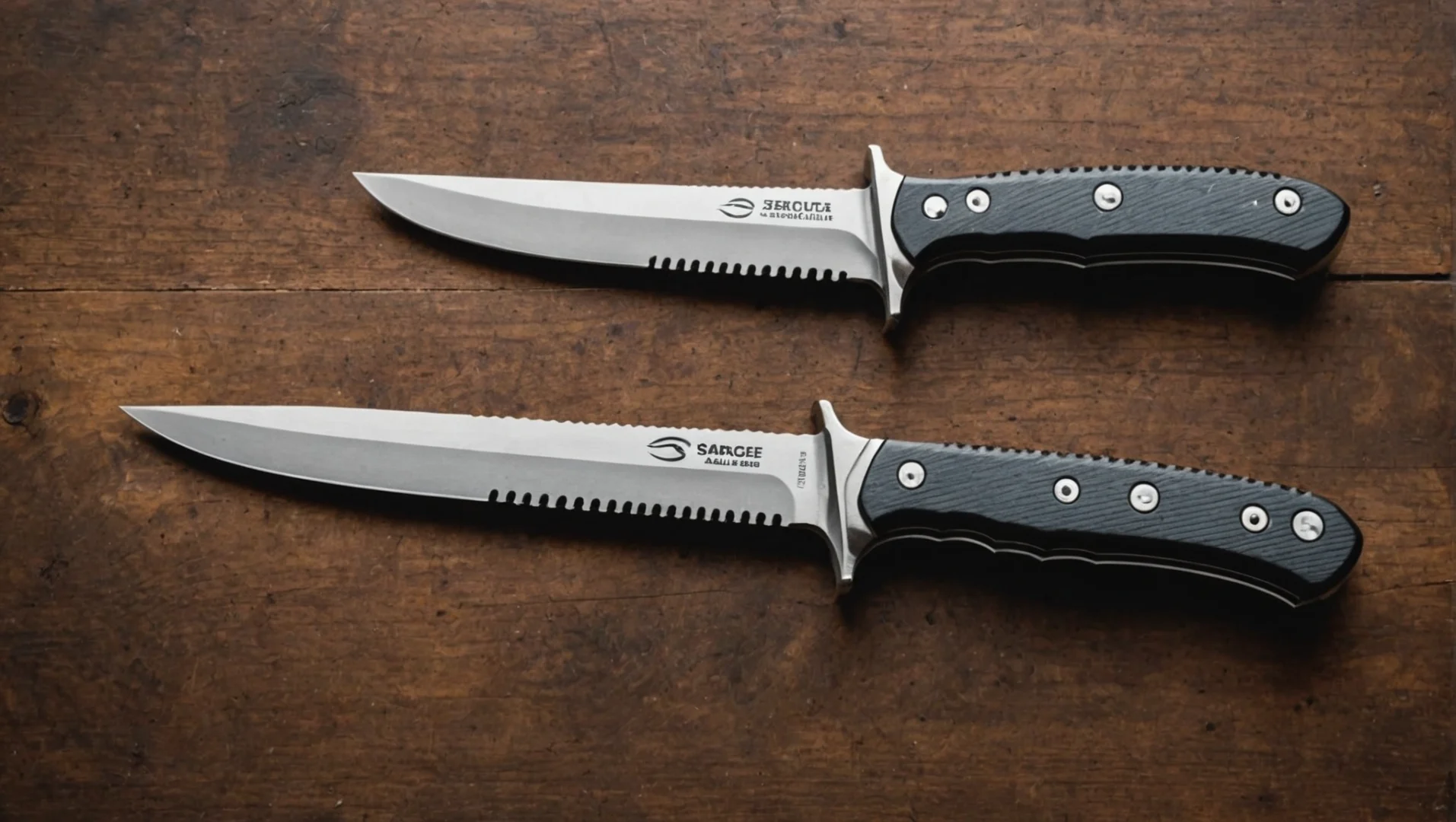
Serrated knives, prized for their ability to slice through tough foods, require specialized sharpening techniques to maintain their performance. Incorrect sharpening can damage the serrations, compromising their effectiveness and potentially leading to injury. Understanding the nuances of these techniques is crucial for achieving optimal results.
Sharpening serrated knives involves a delicate balance between maintaining the serration angles and achieving a keen edge. The methods employed, whether honing steel or sharpening stones, require a precise approach to avoid altering the serrations’ critical geometry. This section details various techniques, providing step-by-step guidance and comparing their effectiveness.
Honing Steel Techniques
Honing steels are excellent for maintaining the sharpness of serrated knives between sharpening sessions. They primarily realign the blade’s edge without significantly altering its overall geometry. This is vital for serrated knives as significant changes can compromise the serration’s cutting action.
- Step 1: Position the Blade. Hold the knife at a slight angle to the honing steel, ensuring the serrations are angled towards the steel. The angle should be consistent with the knife’s original serration angle.
- Step 2: Draw the Blade. Draw the knife blade along the honing steel, from the heel to the tip, maintaining the angle and applying gentle, even pressure. This smooths the edge and realigns the metal crystals.
- Step 3: Repeat on the Other Side. Repeat the process on the opposite side of the blade, maintaining the same angle and pressure.
- Step 4: Maintain Angle Consistency. Crucially, ensure a consistent angle throughout the entire process to preserve the serrations’ precise geometry.
Sharpening Stone Techniques
Sharpening stones, particularly fine-grit varieties, can provide a more substantial sharpening experience than honing steels, potentially improving the knife’s edge. However, with serrated knives, careful attention to detail is paramount to prevent altering the critical serration angles.
- Step 1: Select the Correct Stone. Choose a sharpening stone with a grit appropriate for the knife’s current sharpness. Fine grits are recommended for serrated knives. Coarse grits are best for initial sharpening, followed by fine grits to achieve a refined edge.
- Step 2: Maintain the Serrated Angle. Apply even pressure and maintain the correct angle of the knife while moving it across the sharpening stone. This ensures that the serrations’ shape and angles remain intact.
- Step 3: Work in Small Strokes. Work in short, controlled strokes to prevent excessive wear and tear on the stone and maintain the serrations’ alignment.
- Step 4: Alternate Sides. Sharpen both sides of the blade, maintaining the same angle for consistent results. This crucial step preserves the serrations’ integrity.
Comparison of Techniques
Different sharpening techniques offer varying degrees of refinement and impact on the knife’s edge. The choice depends on the user’s needs and the condition of the knife.
| Technique | Pros | Cons |
|---|---|---|
| Honing Steel | Quick, easy maintenance, preserves serrations | Limited edge improvement, less effective for significant sharpening |
| Sharpening Stone | Greater edge improvement, can achieve a sharper edge | More time-consuming, requires more precision to avoid altering serration angles |
Maintaining and Caring for Serrated Knives
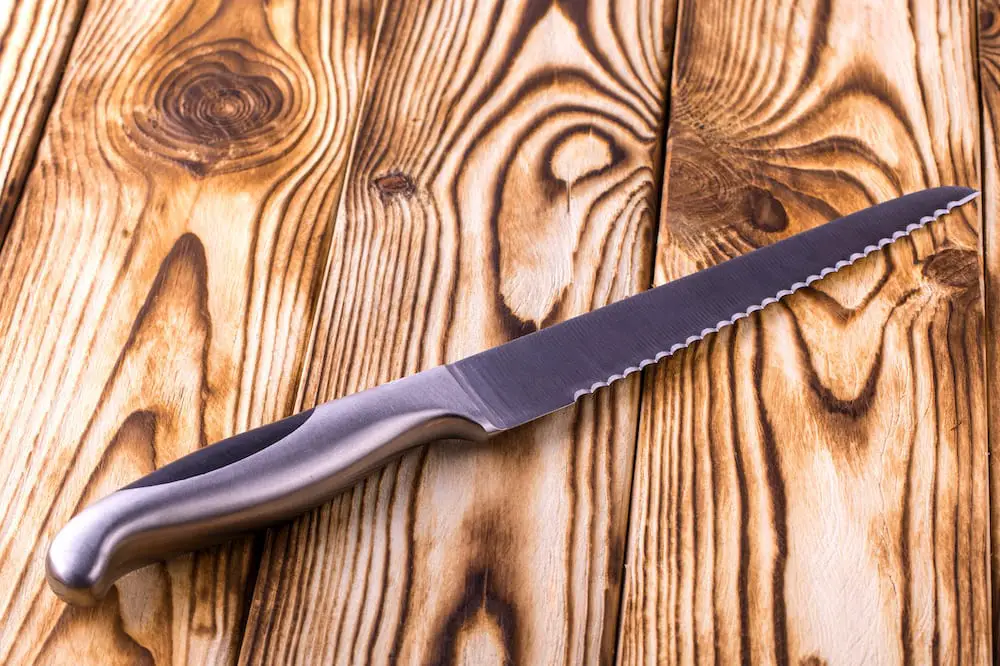
Proper maintenance is crucial for extending the lifespan and optimal performance of serrated knives. These knives, designed for cutting through tough foods, require specific care to preserve their sharp, serrated edges and prevent premature damage. Understanding how to store, sharpen, and care for your serrated knives is key to maximizing their usefulness and enjoyment in your kitchen.
Proper Storage of Serrated Knives
Storing serrated knives correctly protects their delicate edges from accidental damage. Avoid placing them in drawers alongside other utensils, as this can lead to nicks and dulling. A dedicated knife block, a magnetic strip, or a knife roll are ideal storage solutions, keeping the serrated blades separated from other utensils and protected. Using a knife roll allows the knife to rest securely on its edge, preventing the serrated edge from being damaged.
Importance of Regular Sharpening
Regular sharpening is essential to maintaining a serrated knife’s sharpness. A dull serrated blade requires more force to cut, increasing the risk of slipping and potential injury. Moreover, a dull blade often leads to uneven cuts and a less efficient cutting experience. Sharpening ensures the knife maintains its ability to slice through food with ease and precision, preventing accidents.
Signs Indicating a Serrated Knife Needs Sharpening
Several indicators suggest a serrated knife needs sharpening. A noticeable loss of cutting ability, difficulty in cutting through food, or a tendency for the blade to slip are all clear signs. If the knife is no longer cleanly slicing through food or if it feels excessively resistant to cutting, it is a strong indication that the knife needs to be sharpened. The presence of uneven or jagged cuts is another significant indicator.
Preventing Damage to the Serrated Edge
Avoiding damage to the serrated edge involves mindful handling and storage. Avoid using the knife for tasks it wasn’t designed for, such as prying open containers or using it as a general-purpose tool. Avoid dropping the knife or placing it on hard surfaces where it might be susceptible to nicks or impacts. Use caution when cutting tough foods; excessive force can damage the serrated edge. Proper cutting techniques and mindful handling are key.
Role of Proper Knife Care in Maintaining Lifespan
Proper knife care plays a pivotal role in extending a serrated knife’s lifespan. Regular sharpening and appropriate storage prevent the serrated edge from becoming damaged. This helps maintain the knife’s sharpness, efficiency, and overall performance. A well-maintained serrated knife can serve as a reliable kitchen tool for years to come. By following the guidelines for maintenance and care, you ensure the knife remains a sharp, efficient, and safe kitchen companion.
Troubleshooting Common Sharpening Issues
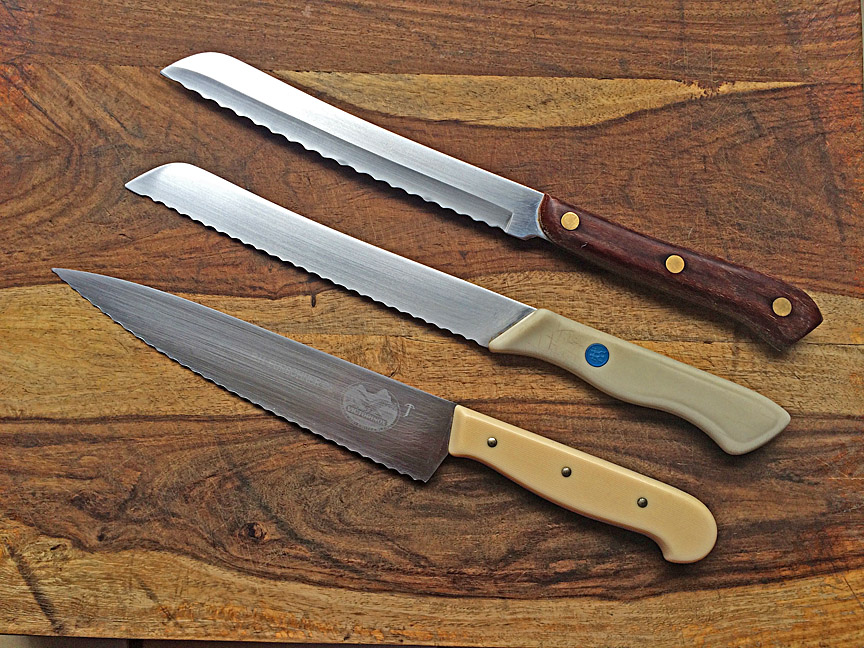
Sharpening serrated knives, while often rewarding, can sometimes present challenges. Understanding potential problems and their causes is crucial for achieving optimal results. This section will address common issues, outlining solutions and emphasizing techniques for maintaining even serrations and rectifying damage.
Troubleshooting involves identifying the root cause of any imperfections in the knife’s serrations. Addressing the underlying problem directly is more effective than simply attempting superficial fixes. Careful observation and a methodical approach are essential for successful troubleshooting.
Uneven Serration Heights
Serrated knives often exhibit varying heights in their serrations. This can be a result of uneven wear, improper sharpening techniques, or inherent inconsistencies in the blade’s manufacturing process. An uneven distribution of serration heights affects the knife’s ability to slice and cut efficiently, leading to inconsistent performance.
- Cause: Incorrect sharpening angle or inconsistent pressure applied during the sharpening process. Uneven wear on the blade’s surface can also contribute to this problem. In some cases, the original serrations were not uniformly spaced or shaped.
- Solution: Employ a consistent sharpening angle for each serration. Ensure even pressure is applied across the entire length of the blade during sharpening. Use a honing steel to align the serrations and ensure even sharpening pressure.
Damaged Serrations
Serrated knives are susceptible to damage, often caused by improper use or impacts. Chipped or broken serrations compromise the knife’s cutting ability and overall structural integrity. Identifying the extent of the damage is the first step in effective repair.
- Cause: Excessive force applied to the knife, impact with hard surfaces, or improper storage. Poor handling, leading to the blade striking a hard surface, can also cause significant damage.
- Solution: Minor chips can sometimes be repaired using a fine-grit sharpening steel or a specialized knife repair kit. More extensive damage, however, may require professional intervention. Always prioritize safety when handling damaged knives.
Excessive Serration Filing
A common mistake is over-aggressive filing or sharpening of serrations. Excessive filing can remove too much material, leading to a weakening of the blade’s structure and a reduction in its cutting edge. This can also alter the original serration pattern, impacting the knife’s performance.
- Cause: Using a sharpening tool with too aggressive a profile, applying excessive pressure, or improperly managing the sharpening angle.
- Solution: Employ a sharpening tool designed for serrated knives. Work with a consistent, controlled pressure, ensuring each serration receives the same amount of attention. Avoid aggressive sharpening techniques that can damage or alter the serrations.
Misaligned Serrations
Serrations that are not aligned correctly impact the knife’s efficiency and precision. Misalignment can lead to uneven cutting performance and potentially damage the material being cut. Recognizing misalignment is crucial for proper repair.
- Cause: Improper sharpening techniques or damage to the blade’s structure.
- Solution: Use a honing steel to align the serrations, ensuring they are pointing in the same direction. In cases of significant misalignment, professional repair may be necessary.
Illustrative Examples and Case Studies

Sharpening serrated knives effectively hinges on understanding the specific characteristics of each type. Different serrated knife designs, from the delicate curves of a carving knife to the robust teeth of a bread knife, demand tailored approaches to maintain optimal performance. This section examines these nuances, illustrating ideal sharpening techniques and the consequences of improper sharpening.
Proper sharpening is crucial for maintaining the utility and longevity of serrated knives. A well-maintained serrated knife will perform better, ensuring a smoother cutting experience and reducing the risk of injury. Conversely, improper sharpening leads to dull blades, reduced efficiency, and even potential safety hazards.
Different Serrated Knife Types and Their Sharpening Needs
Different serrated knives are designed for various tasks, each requiring a slightly different approach to sharpening.
- Bread Knives: Bread knives typically feature coarse, wide serrations. Their primary function is to slice through loaves of bread without crushing the crust. The robust serrations require a sharpening technique that addresses the larger tooth profile while maintaining the integrity of the serrations. A coarse sharpening stone or ceramic rod can effectively sharpen bread knives, as the teeth are designed to endure considerable wear.
- Carving Knives: Carving knives are designed for precision cuts on roasted meats and poultry. Their serrations are often finer and more closely spaced than those on bread knives. The delicate serrations require a more refined sharpening approach. A fine sharpening stone or ceramic rod is ideal for maintaining the sharp edges of the serrations, preventing the teeth from becoming rounded or blunt.
- Utility Knives: Utility knives are versatile and often feature a variety of serrated blade designs. The serrations may be coarser or finer, depending on the intended use. The sharpening technique for utility knives should be tailored to the specific serration pattern and intended use. Consider using a combination of sharpening tools, including a fine stone and a ceramic rod, to effectively address the varying serrations.
Scenarios of Serrated Knife Use and Proper Sharpening
Proper sharpening is critical in various scenarios. A dull serrated knife can be unsafe and inefficient, leading to uneven cuts, increased risk of slippage, and potential injuries.
- Slicing Bread: A sharp bread knife ensures clean cuts through bread without tearing or crushing the crust. Proper sharpening allows for efficient slicing and reduces the effort required. A dull bread knife may crush the bread, leading to a less satisfying experience.
- Carving Roast Chicken: A sharp carving knife is essential for precise carving of poultry. Proper sharpening of the serrations ensures a clean cut through the meat without tearing or shredding the delicate tissues. A dull knife may result in uneven cuts and damage to the meat.
- Preparing Vegetables: Sharp utility knives with serrations are invaluable for slicing vegetables like tomatoes, cucumbers, or zucchini. Proper sharpening enables precise cuts, reducing the risk of slipping and preventing injury. A dull knife can cause more effort and increase the likelihood of accidents.
Effects of Improper Sharpening
Improper sharpening techniques can negatively impact the performance and safety of a serrated knife.
- Blunting of Serrations: Inconsistent or insufficient sharpening can result in the blunting of serrations. This leads to inefficient cutting, increased force required, and an increased risk of slippage.
- Uneven Cutting: Uneven sharpening leads to uneven cuts and potentially damages the food being cut. A sharp knife produces clean, consistent cuts.
- Increased Risk of Injury: A dull knife requires more force to cut, increasing the risk of slippage and accidents. Sharp knives are safer because they require less force.
Case Study: Impact of Regular Sharpening on Knife Lifespan
Regular sharpening significantly extends the lifespan and sharpness of serrated knives. Maintaining a knife’s sharpness involves regular sharpening, typically every few months, or even weekly if the knife is used frequently. This maintenance is more effective than trying to resharpen a knife after prolonged periods of use, which may not fully restore the initial sharpness. Regular sharpening will prevent the serrations from becoming excessively worn or damaged, leading to a longer operational life.
Key Questions Answered
How to sharpen serrated knives – What are the common signs that a serrated knife needs sharpening?
A dull serrated knife may exhibit reduced cutting power, increased resistance when cutting, and uneven slicing. The serrations might also appear less defined or worn down.
Can I use the same sharpening techniques for all types of serrated knives?
While some basic techniques apply, different serrated knife types (e.g., bread knives, carving knives) might benefit from slight adjustments in sharpening angle or pressure. Refer to the table comparing different types and methods in the guide for specific recommendations.
What’s the best way to prevent damage to the serrated edge while sharpening?
Avoid excessive pressure, and use gentle, controlled strokes. Ensure the sharpening angle is consistent across the entire serrated edge to prevent uneven wear. Always use the appropriate sharpening tools for the specific knife type.
